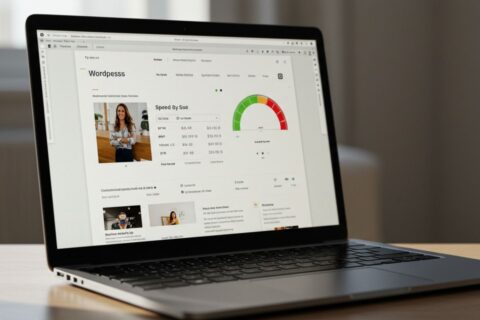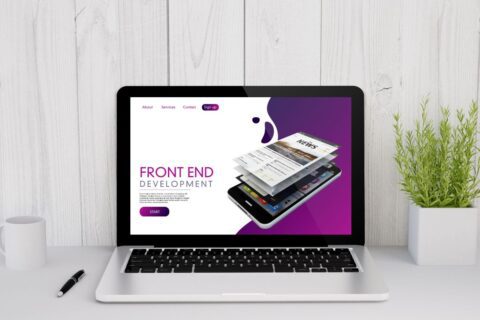These days visitors expect websites to look sharp and load quickly—no matter which device they’re using. But even skilled professionals fall into common traps. If you want to create a seamless browsing experience, avoid these mistakes developers make with responsive images. Below, we’ll cover the seven most frequent pitfalls, plus tips and tools for flawless, high-performing visuals.
Using Only a Single Image Size for All Devices
Problem: Slow load times on mobile, blurry images on desktop.
Serving just one image size is one of the classic mistakes developers make with responsive images. Large images look crisp on desktops but can bog down mobile load times, while small images appear pixelated on bigger screens. This not only wastes bandwidth but can also frustrate users.
Responsive image best practices suggest using the srcset and sizes attributes in your <img> tags. This lets browsers automatically pick the most appropriate image for each device, ensuring both speed and quality.
Ignoring Image Aspect Ratios:
Problem: Images appear stretched or squished on certain screens.
Overlooking image aspect ratio issues can break your layout and ruin the visual appeal of your site. If you don’t maintain consistent ratios, images can look distorted, making your site appear unprofessional.
Solution: Maintain aspect ratios using CSS (like the aspect-ratio property or padding techniques) and ensure your HTML structure supports scalable images. Addressing image aspect ratio issues is key to professional web design and smooth responsive images for web development.
Forgetting About Retina and High-DPI Displays:
Problem: Images look pixelated on modern devices.
Failing to provide higher-resolution images for Retina and high-DPI screens is another mistake developers make with responsive images. As more users browse on advanced smartphones, tablets, and laptops, sharpness matters.
Solution: Provide 2x or 3x image versions using srcset, so high-DPI devices display crisp, clear visuals. This is essential for responsive images for web development and improves your site’s perceived quality.
Do you need any website-related help? Let our experts guide you
Not Compressing or Optimizing Images for the Web
Problem: Large images slow down page loads and increase bounce rates.
Skipping image compression for web is a huge performance killer. Oversized images waste bandwidth, frustrate users, and drag down your Google rankings.
Solution: Use tools like TinyPNG, ImageOptim, or convert your images to WebP format. These solutions offer superior image compression for web without noticeable quality loss. This step is critical for image performance optimization and ensuring your site loads lightning fast.
Overlooking the <picture> Element for Art Direction
Problem: Same image crop on all devices, missing visual focus.
Sometimes, simply resizing isn’t enough. If the important part of an image gets cropped out on smaller screens, your message is lost. Not using the <picture> element is a common mistake, especially when you need different versions for different viewports.
Solution: The <picture> element allows you to serve different crops or even formats based on device size, ensuring visual focus is always where you want it. This is a must for brands or publishers who want to maintain strong visual storytelling across every screen size.
Neglecting Lazy Loading for Offscreen Images
Problem: All images load at once, even those not in view.
Not implementing lazy loading is one of the mistakes developers make with responsive images that can seriously hurt site performance, especially on long or image-heavy pages.
Solution: Add the loading=”lazy” attribute to your image tags. This tells browsers to only load images as users scroll to them. This best practice is crucial for image performance optimization and for keeping bounce rates low.
Not Providing Proper Alt Text and Image Metadata
Problem: Images are invisible to screen readers and search engines.
Neglecting alt text and metadata doesn’t just hurt SEO; it also makes your website inaccessible for people using assistive technologies.
Solution: Always add descriptive alt text that explains each image’s purpose or content. Fill out image titles and other metadata fields where possible. This supports better rankings and a more inclusive experience for all users.
Bonus Tips for Flawless Responsive Images
- Use image management solutions like Cloudinary or Imgix for on-the-fly optimization.
- Regularly test your website’s images using Google Lighthouse or browser DevTools to uncover issues and opportunities for further image performance optimization.
- Stay current on responsive image best practices as browsers and devices evolve.
How to Deal with Corrupted Images in WordPress Uploads
Conclusion:
Getting responsive images right can transform your website’s performance, accessibility, and professionalism. Avoid these common pitfalls to deliver a seamless user experience across all devices. Audit your current setup, update your workflows, and keep learning about new techniques, because images are more than just decoration; they’re a cornerstone of great web design.
Want to future-proof your site’s images? Start with a full image audit today.
FAQs
Q1: Why are responsive images important for SEO?
A: Responsive images improve page speed, reduce bounce rates, and make sites more accessible, all of which help boost search rankings.
Q2: What’s the difference between srcset and <picture>?
A: srcset lets browsers choose the right image size, while <picture> allows serving different image formats or crops based on device and conditions.
Q3: How can I check if my images are truly responsive?
A: Use browser DevTools to simulate devices and tools like Google Lighthouse or WebPageTest to analyze image performance and responsiveness.
Q4: What image formats are best for responsive web design?
A: Modern formats like WebP and AVIF offer better compression and quality than JPEG/PNG, making them ideal for responsive, fast-loading websites.







